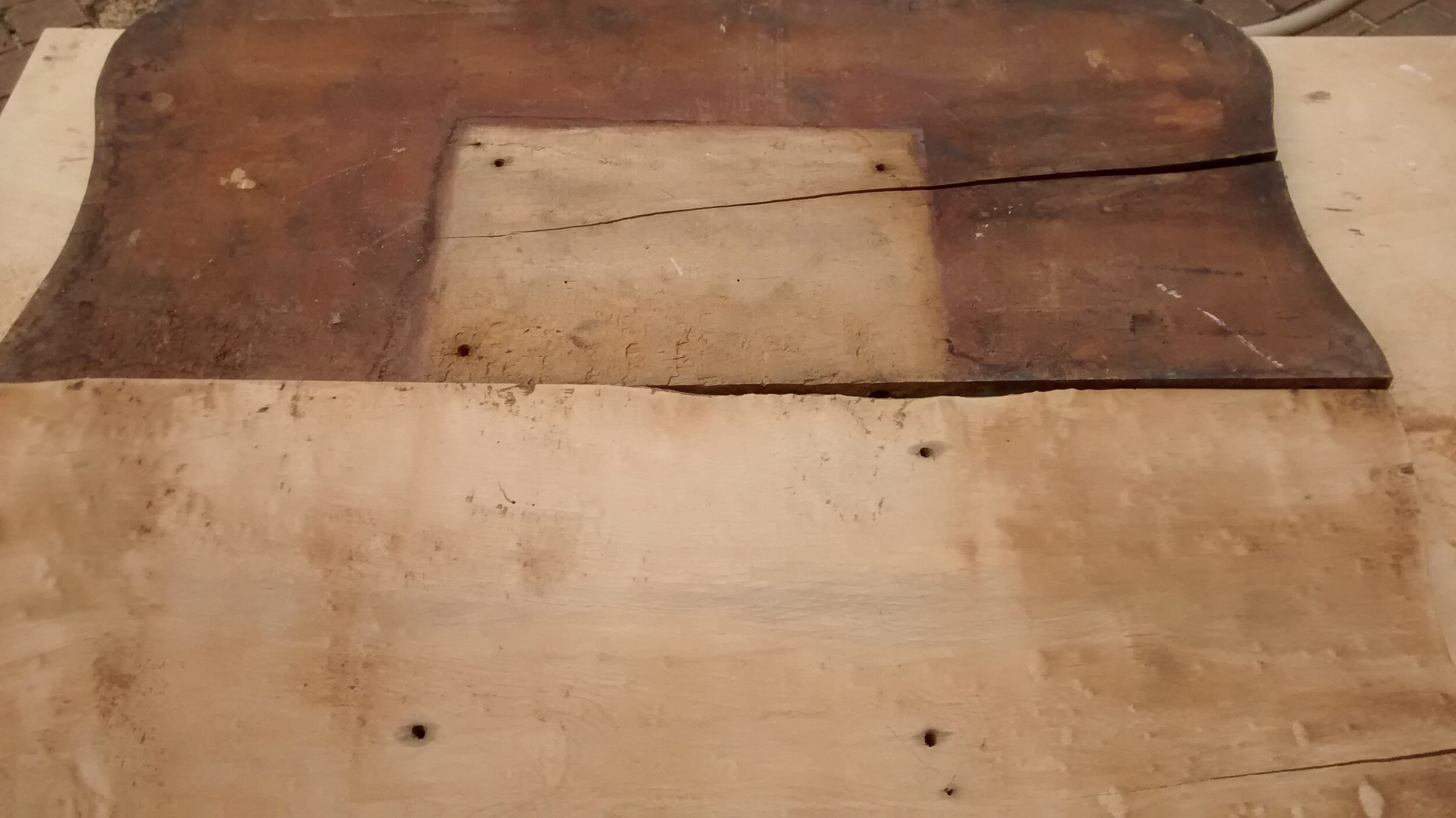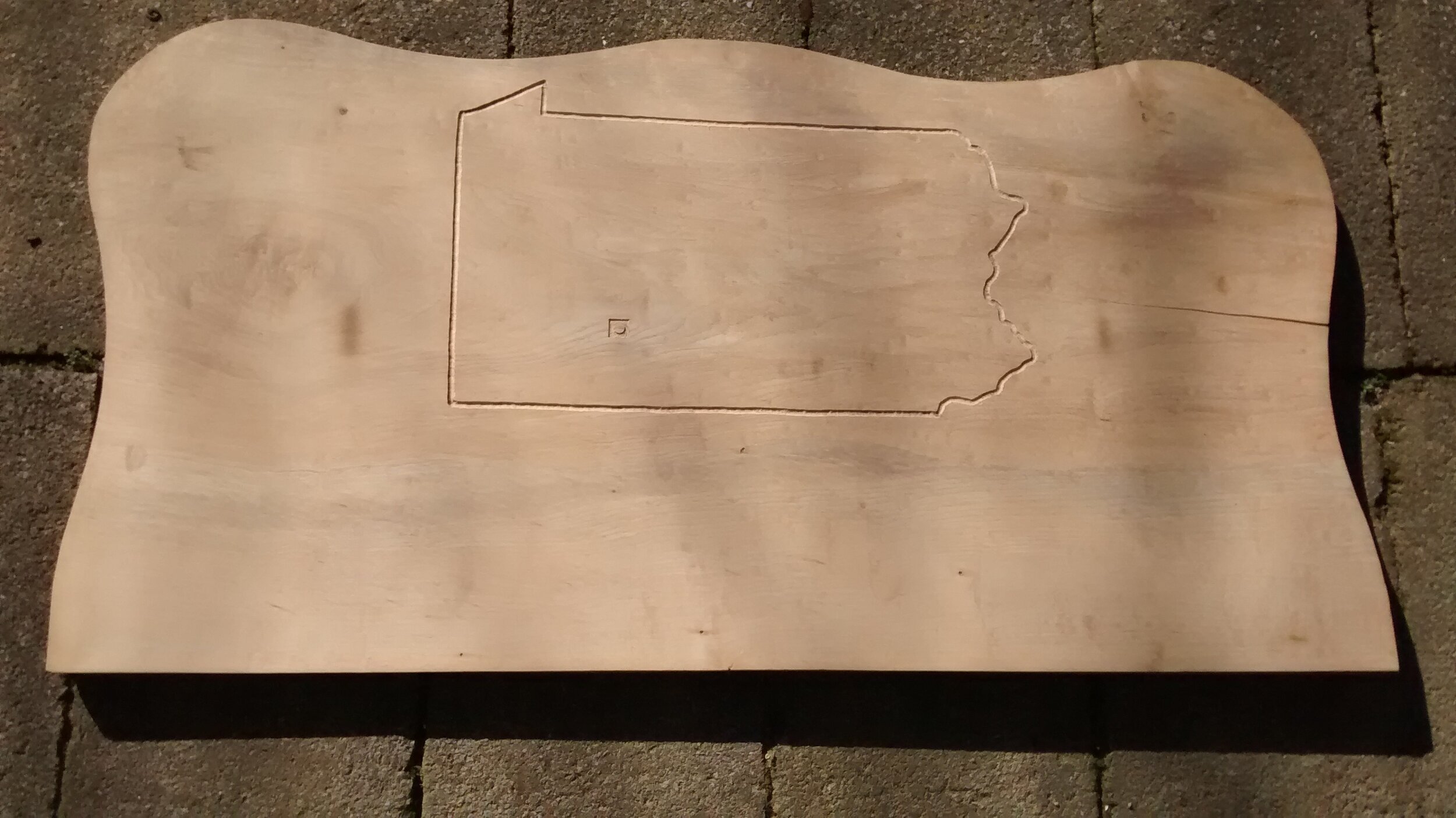Pennsylvania-Themed Display Shelf with Hooks
Not for sale; this was a commissioned job. Dimensions: Width, 30 inches; Height, 15 inches, Depth, 6 inches; Weight, 13 pounds. A longtime work friend had an old family heirloom in a storage unit and wondered whether I could either repair it or make it into something new. Why, yes, I can—and, in fact, I made several new things out of it, as it was beyond repair for continued use as a table. It was broken, dirty, and the top was badly cracked and warped in two directions. But originally this was an amazing old table—emphasis on old. It was built by my friend’s great-grandfather, Tobias Gindlesperger, when he was just 17 years old, in 1873. I’m kind of amazed by the design and craftsmanship, especially considering the tools that were probably available back then. But I guess it was his calling; I’m told Tobias became a carpenter. Well, with this table, he got off to a heck of a start. Also, the wood he chose was beautiful—but that only became clear after I refinished it.
The Story
I used a belt-sander and hand-sanding to clean up and smooth out the top surface. I only lightly sanded the underside, to retain a bit of old-new contrast from front to back. Also, for that lighter-darker contrast, I did not sand the outer wavy edges of the tabletop, I just washed them clean. I don’t know what kind of wood was used to make the tabletop. Based on just a little research on the look of various hardwoods that grow in southwest Pennsylvania, I’d guessed the top might be made of hickory. But I showed it to Alex Grabenstein, the proprietor of Vintage Lumber, in Woodsboro, Maryland, and he thought it was maple, in part because of the near-birdseyes scattered around the various surfaces. The width of the two halves of the tabletop, 14 and 15 inches, suggest Tobias used wood from a really large, old tree. I would not be surprised if all the wood in the table came from trees 100-200 or more years old when Tobias got his hands on it. For me, working with wood that easily could be 250 years old was a real treat.
I suggested putting the outline of Pennsylvania on the backing piece and somehow marking the family’s ancestral town to personalize the piece. Tobias lived in the small town of Windber (technically, a borough), which straddles Somerset and Cambria Counties, Pennsylvania. The design marking the location of Windber was suggested by my friend’s father, Tobias’s grandson. It turns out, “Windber” is a reversal of the syllables in the last name of Charles and Edward Julius Berwind, owners of the Berwind Corporation (also known as the Berwind-White Coal Mining Company), historically involved in the coal industry in that area of Pennsylvania. The white square and black circle was the company’s symbol, painted on their rail cars. I carved it out by hand with some small woodcarving chisels. For the outline of Pennsylvania, I went more modern, using my electric Dremel 4300 with a carving bit. I highlighted the groove with semi-gloss black paint. But that was after I applied clear Watco Danish Oil to the visible surfaces, to bring out the natural color and grain patterns. I hope the final piece, a place to display keepsakes and hang keys, coats or umbrellas, will be treasured by Tobias’s descendants for many more generations.
Related Items: Upside-Down Coffee Table; Four Picture Frames; State-Themed Organizers; DC-Themed Organizers.



















